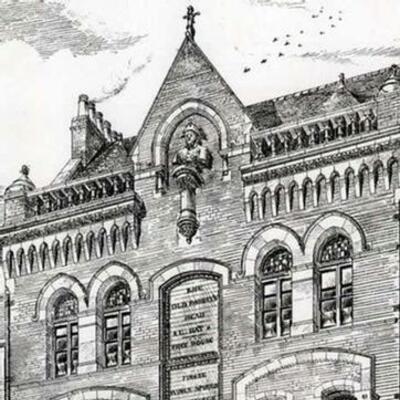The origins of the East End textile industry can be traced to the 14th century when Flemish artisans set up dye works on the River Lea. In the late 17th century the Huguenots arrived in Spitalfields bringing their skills with silk-weaving, lace-making, fan-making, etc. Then the Jewish tailors arrived and enriched the area further.
This section lists the memorials where the subject on this page is commemorated:
garment and textile industries in the East End
Commemorated ati
Bowler plaque - Scissors and Buttons - Brick Lane north
We failed to find this plaque in Dec-Jan 2017, but it is identical to that fu...
Bowler plaque - Scissors and Buttons - Brick Lane south
There is meant to be another identical plaque further north in Brick Lane but...
Bowler plaque - Shuttle and Bobbins
The plaque shows a shuttle and two bobbins, representing the local weaving tr...
Whitechapel Threads sculpture
The artists worked with the Rope Makers Guild to produce this image of two sk...
Other Subjects
Rodney's Head pub
Records show Rodney's Head pub was at 4 Old Street in 1851. In 1876 this was rebuilt as shown in this drawing which is pretty much as we see it today. By 1895 it was known as Old Rodney's Head a...
District Bank
Founded as Manchester and Liverpool District Bank. Name shortened to District Bank in 1924. 1962 acquired by the National Provincial Bank but traded separately until the 1968 merger with Westminste...
Courage brewery - Horselydown Lane
Founded by John Courage at the Anchor Brewhouse site. The earliest existing building dates from 1871 and was largely rebuilt in 1894 - 1895. Reconstructed, restored and refurbished in 1985 - 1989....
Royal Exchange
The Royal Exchange was established by Thomas Gresham in 1566, following his, and his father's, favourable experiences of the Antwerp Bourse as a place where merchants could arrange credit and loans...
Fred Reynolds
Worked for the Royal Arsenal Co-operative Society. Was Assistant Secretary to a building committee in June 1912.










Comments are provided by Facebook, please ensure you are signed in here to see them